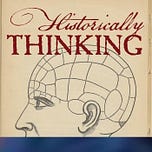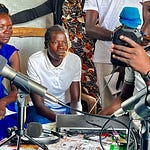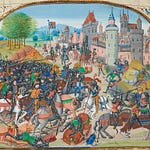Originally published on July 18, 2022 (Episode 272)
Introduction
When the Bavarian naturalist Moritz Wagner traveled through the kingdom of Georgia in 1819, he discovered thousands of Germans, some living in what he described as a “ganz deutscher Bauart”—a village built in a German style. These emigrants, or their parents, had left Central Europe in the wake of the Napoleonic Wars. Wagner’s experience was not unique. Similar German communities could be found throughout Russia, Argentina, Chile, Brazil, the American Midwest, and many places closer to Bavaria itself.
They were, as my guest Glenn Penny argues, “German and something else.” Their stories and identities are the heart of his new book German History Unbound: From 1750 to the Present (Cambridge University Press, 2022).
About the Guest
Glenn Penny is Professor of History and the Henry J. Bruman Endowed Chair in German History at the University of California, Los Angeles. His research interests explore “the relationships between Europeans and non-Europeans from the eighteenth century to the present. He is particularly interested in Germans’ broad engagement with the wider world.” Among his previous works is In Humboldt’s Shadow: A Tragic History of German Ethnology.
For Further Investigation
H. Glenn Penny, German History Unbound: From 1750 to the Present (Cambridge University Press, 2022)
H. Glenn Penny, In Humboldt’s Shadow: A Tragic History of German Ethnology (Princeton University Press, 2021)
Germans from Russia Heritage Society — with resources including a list of German villages in the Caucasus
Related podcast episodes:
The Curious Case of the Lion’s Blood: How Anna Zieglerin Came to Be Burned at the Stake
Porcelain: Suzanne Marchand on how Europe cracked China’s secret and reshaped global culture.
💬 Listen & Discuss
How does German history change when we look beyond national borders and the teleology of the Third Reich? Share your reflections in the comments—and send this episode to a friend who thinks about migration, identity, or belonging.











